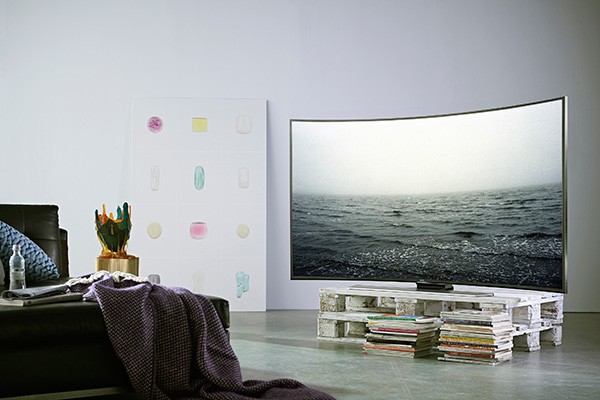OLED, also known as "Organic Light-Emitting Diode", is simply a technology that makes TVs thinner than LCDs or plasmas, while being more efficient and environmentally friendly.
The working principle of OLED technology is simply that a carbon-based organic film is sandwiched between two conductors so that current can pass through and then emit light. Correspondingly, LCD TVs require a layer of backlighting to achieve brightness. OLED pixels have self-illuminating capabilities that allow the TV to be made thinner.
At present, OLED technology is divided into two systems, a passive matrix (PMOLED) and an active matrix (AMOLED). The latter controls each pixel by applying a voltage, making it suitable for performance dynamics, making it the first choice for OLED TVs.
At present, LG and Samsung are more important for OLED TVs, but they have no small difference in technology usage. The difference between the two is mainly in the sub-pixel structure. Samsung uses the traditional red, green and blue (RGB) pixel structure, while LG prefers the WRGB four-color pixel technology, adding the fourth seed pixel "white". The white light generates three sub-pixels of red, green and blue through the color filter. LG says this will make the image brighter.

Where is OLED TV?
Compared with LCD technology and plasma technology, OLED technology can bring more benefits. The first point we have already said is that it can make the TV lighter and thinner.
But for most consumers, the biggest benefit of OLED TV is the improvement of image quality. Since the OLED pixels are self-illuminating, the viewing angle is much wider. Even at a very biased angle, the color and saturation are just the same as the screen.
Because every pixel on the OLED screen can be turned off independently, it can bring the highest possible contrast ratio and make the darkness darker. In theory, the OLED image will be brighter and the response time will be less than 0.01 milliseconds, solving the problem of dynamic blur.
What is wrong with OLED?
OLED TVs are beautiful, but it has not been popular for years. There is a reason. The first is expensive, and the cost of TV is high. LG's first 55-inch OLED TV 55EM970V was sold at a price of nearly 100,000 yuan, and 55EA980W was also 80,000 yuan. Samsung's first OLED TV KE55S9C, the price is also converted into RMB is nearly 70,000 yuan. However, as technology advances, the cost reduction is of course. Last year, LG's 55EC930V sold for only 20,000 yuan.
Another big factor in the high price is the low yield of OLED TVs. Every TV on the shelf means more equipment is in the waste heap. This problem can be solved with the development of technology.
A big problem encountered with OLED technology is the blue pixel. OLED panels are used to emit blue light faster than red and green light, and color balance is bound to be affected after a period of use. In this regard, Samsung's approach is to make the blue pixel twice as large as other colors. LG's WRGB program is said to circumvent this problem, but how it will have to be observed for a long time.
Curved TV? play games? visit website?
From the moment the OLED TV was born, it has surface properties, and the controversy about curved TV continues until now.
Most TV manufacturers believe that curved screens can enhance the viewing experience. However, as an ordinary audience, only the right middle can get the best experience, and the slight deviation of perception is very serious.
When watching movies or playing games, the value of OLED is very full, especially in the contrast and color display visual effects have a great impact on users. The only drawback is when browsing the web, because the background of the web page is usually a white background, and the OLED consumes a lot of power in order to display better colors and bright images.
High Temp Constant Power Heating Cable
High Temp Constant Power Heating Cable,Self-Regulating Electric Heating Tape,Snowmelt Heating,High Temperature Electric Heating Tape
JIANGSU PENGSHEN HIGH TEMPERATURE WIRE CABLE CO., LTD. , https://www.pengshencable.com